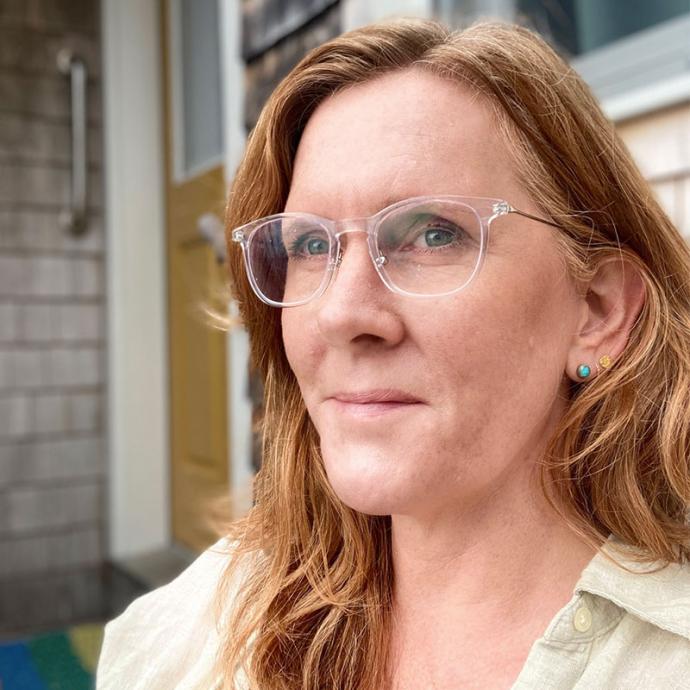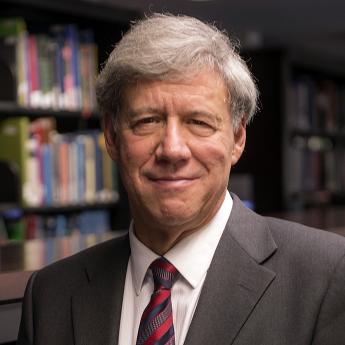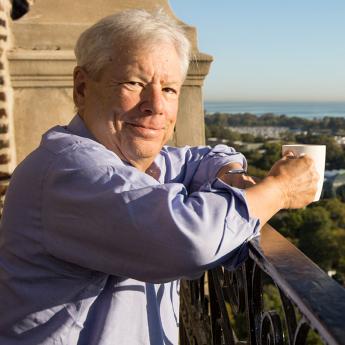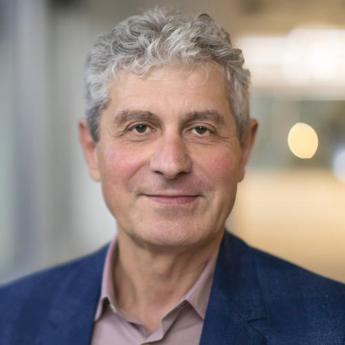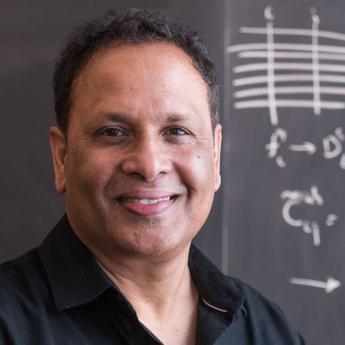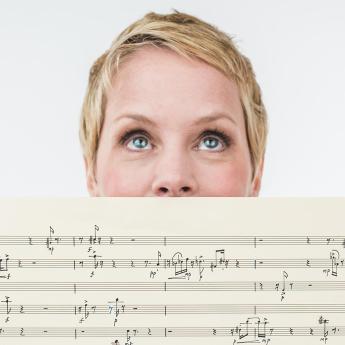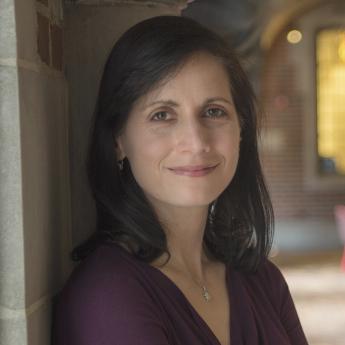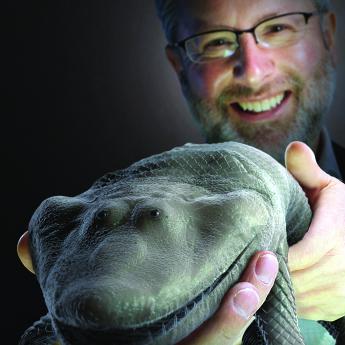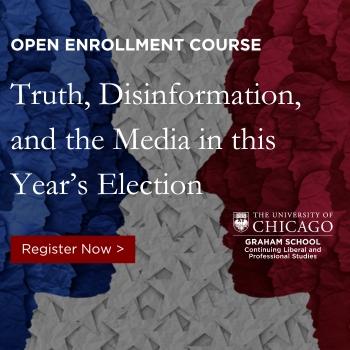Show Notes
What does our relationship with the dead tell us about the living? Anthropologists learn about ancient cultures by studying their burial sites, but could we do the same with contemporary America? Those are the questions that University of Chicago anthropologist and historian Shannon Lee Dawdy set out to answer in her new book, American Afterlives: Reinventing Death In The Twenty-first Century.
What she uncovered was a discreet revolution happening around American death rituals and practices, especially the rise in cremation after the tragedies of Sept. 11. According to one funeral director, there have been more changes in the death industry in the last ten years than the last hundred. And those changes reveal all sorts of societal and cultural shifts in response to climate change, COVID-19 and the personalization of everything, including DIY funerals and green burials.
Dawdy also produced a documentary, I Like Dirt (2020, Zox Films) with director Daniel Zox. Much of the audio used in this episode comes from that documentary.
Subscribe to Big Brains on Apple Podcasts, Stitcher and Spotify.
(Episode published May 12, 2022)
Related:
- Learn more about American Afterlives—Princeton University Press (2021)
- Learn more about I Like Dirt, directed by Daniel Zox and Shannon Lee Dawdy, Zox Films (2020)
- ‘American Afterlives’ charts growing marketplace for new death rituals—Las Cruces Sun News
- The Last Anointing—The New York Times
- Return to Pirate Island—JSTOR
- In time capsule, UChicago students send COVID-19 artifacts 100 years into the future—UChicago News
Transcript:
Tape: I think that when we die ... Oh, that's a big question.
Paul Rand: For the past few years, one University of Chicago professor has driven around the United States asking people two questions, what do you want done with your body when you die?
Tape: I would like to be buried with a tree planted on top of me so that I can continue in some sort of a positive state.
Paul Rand: And what do you think happens to us after we die?
Tape: I believe in a weird version of reincarnation.
Shannon Dawdy: Well, I think that death rituals really reveal a lot about the cosmology, the way that people think about the world and about the human relationship to the cosmos.
Paul Rand: That's anthropologist and historian, Shannon Lee Dawdy.
Shannon Dawdy: But also social stratification, social relations, all kinds of ideas are embedded or buried with the dead that you can excavate and analyze. It really is quite revelatory about living cultures.
Paul Rand: Most anthropologists dig up ancient sites to learn about the cultures of the past.
Shannon Dawdy: I thought, well, why can't we do this with our contemporary culture?
Paul Rand: Dawdy set off on a journey across the country, studying what our death practices and rituals say about America today.
Shannon Dawdy: Use that mortuary archeology viewpoint, ask what's going on with the dead, how are people treating the dead, and what does this say about the living.
Paul Rand: She documents these changes in her new book, American Afterlives, and our death rituals have been changing a lot. According to one funeral director that Dawdy met, American death practices have changed more in the last 10 years than the last hundred.
Shannon Dawdy: What you're seeing is a transition from a very Orthodox, accepted, mainstream, one-size-fits-all, 95% of all Americans in the 20th century had one kind of death ritual. Now, it's going to a heterodox pattern, where it's kind of anything goes.
Paul Rand: From the University of Chicago Podcast Network, this is Big Brains, a podcast about the pioneering research and the pivotal breakthroughs that are reshaping our world. On this episode, what American death rituals say about who we are. I'm your host, Paul Rand.
Paul Rand: You have probably already heard some of the new and unique things that people are doing to commemorate the dead, from making jewelry out of their remains to even mixing ashes with paint to create art. While these practices might strike some as strange, it may surprise you to learn that, historically, America's death rituals have always been considered a bit weird to the rest of the world.
Shannon Dawdy: Well, one of the most distinctive features that goes back to the 1700s, Americans were very interested in viewing the corpse. You would have a home funeral or a home viewing for about three days. The body would stay in the parlor or in-
Paul Rand: Three days, wow.
Shannon Dawdy: Yep. One of the things seems to be rooted, whether or not people were practicing Christians, but rooted in a Christian idea that's also a romantic idea, about the reunification of family members in heaven. You need to be able to memorize what they look like, because you don't know how many years or decades it will be before you'll see them again. Pre-photography, you had to sear that image in your mind. This led, in fact, to post-mortem photography in the Victorian era, something that people find kind of macabre, but it's purpose was to remind you so you can find your loved one in the crowded spaces of heaven.
Paul Rand: There are plenty of historical documents from immigrants and visitors discussing this uniquely American need to view the corpse after death, but what was considered really strange to the rest of the world was the practice of embalming, a practice you may be surprised to learn actually started with the Civil War.
Shannon Dawdy: A number of things converged at once. First you have in the mid-19th century, we get a rise of technology and science and a lot of interest in scientific practice and medicine. With the war, people were sent off to die. They were sent off to die, particularly Northern soldiers, to a strange land, the South was really considered a strange land by people in the North, and the families demanded those bodies come back. Before refrigeration, there was no real good way to do that, where they had already been experimenting with embalming for medical dissection, to learn about the body for medical education, but this just went into hyper gear with a couple of innovators around the Civil War, in order to facilitate getting those casualties home.
Paul Rand: But what may have solidified embalming as a ubiquitous American practice was the death of an American president.
Shannon Dawdy: Abraham Lincoln's body, after his assassination, was famously embalmed and treated cosmetically to look like he was just sleeping. Thousands upon thousands of Americans saw his embalmed body as it made the funeral train from Washington, DC back to Illinois. That went to a different purpose, which wasn't just to keep the body from decaying any further, but actually to make it look beautiful, to be reassured that they're going someplace where they're going to be in peace, they're going to rest in peace. That became an enduring theme in American practice that also stands out as rather unusual.
Paul Rand: Embalming is a specialized task and the increasing demand for it after the Civil War established our modern funeral industry today. For decades, embalming and viewing of the corpse in a funeral setting became the dominant practice for 95% of Americans, even though it was incredibly rare everywhere else on the planet. This led to a belief that Americans use embalming to deny the reality of death, a denial that many people think runs through our culture.
Shannon Dawdy: Yeah, I think that's my biggest argument, is with this very dominant narrative that Americans deny death, viewing the embalmed body and creating this kind of Sleeping Beauty type of death was a kind of Disneyfication of death, as if people are just sleeping, they're not really dead. I was willing to believe that, but as I kept doing my research, I came to doubt that significantly. I think there's actually a lot of basically people were literally looking death in the face when they looked at the corpse, that's more of a confrontation and an acceptance.
Paul Rand: Rather than a denial.
Shannon Dawdy: Right.
Paul Rand: But the ubiquity of embalming in America began to change drastically in the 21st century, with a massive shift toward cremation. What happened? Well, Dawdy traces this surprising trend to the September 11th attacks in 2001.
Shannon Dawdy: With 9/11, one of the things that happened, of course it was televised throughout the country, throughout the world.
Tape: These are the facts as we know them, what President Bush has called apparent terrorist attacks, two airplanes at separate times, not far apart, hit the World Trade Centers. The World Trade Center buildings have collapsed. About 50,000 people work, generally speaking, in those 110-story buildings at the tip of Manhattan.
Shannon Dawdy: Human remains were incinerated through the fires and explosion and ash rained down on those below.
Tape: In the days following the September 11th attacks, that debris and the unending search for bodies. Now a decade later, efforts to identify human remains recovered from that site still continue.
Shannon Dawdy: Victims could never be recovered or identified even through tiny, tiny fragments.
Tape: 20 years later, 40% of the victims are still unaccounted for.
Shannon Dawdy: And so I think it really let people let go of the body, that we don't need the body present in order to mourn and to grieve. The cremation rate between 2000 and 2015 has doubled, so I think that was a major transition.
Paul Rand: She also thinks that 9/11 changed America's relationship with grief.
Shannon Dawdy: 9/11 being in a really important turning point in terms of an acceptance of the public expression of grief and of public mourning.
Paul Rand: What do you mean by that?
Shannon Dawdy: You saw people doing public mourning out in the streets.
Tape: Overnight, a first flower was laid under this maple tree across the street and it has grown and grown throughout the day. Every five minutes, people are showing up to lay a flower. There's pictures of the Twin Towers and a framed photograph.
Shannon Dawdy: Putting flowers and pictures on the chain link fences around Manhattan really, not just at ground zero.
Tape: We've seen the unfurling of flags, the lighting of candles, the giving of blood, the saying of prayers in English, Hebrew and Arabic. We have seen the decency of a loving and giving people who have made the grief of strangers their own.
Shannon Dawdy: I think this really turned the tide that people realized that those who were affected by this incredible tragedy needed the support of the American people. That meant accepting and recognizing their grief and encouraging them to mourn and not telling them, "Well, just get over it," or, "That's embarrassing."
Paul Rand: If national tragedies and crises reshape our death practices, how are the events of today, climate change and COVID-19, changing Americans' relationship to death? Well, that's after the break.
Paul Rand: Big Brains is supported by the University of Chicago Graham School. Are you a lifelong learner with an insatiable curiosity? Join us at Graham and access more than 50 open enrollment courses every quarter in literature, history, religion, science, and more. We open the doors of UChicago to learners everywhere, expand your mind and advance your leadership. Online and in-person offerings are available. Learn more at graham.chicago.edu/bigbrains.
Paul Rand: If embalming was symbolic of pre-9/11 America and cremation post-9/11, Dawdy would call what we're seeing today the era of individualization.
Shannon Dawdy: A do it your own way, DIY funerals, but also DIY ritual, where what's meaningful to people is a totally unique ritual that somehow reflects the individual who passed away.
Paul Rand: Often, these individualized funerals involve the creation of physical remembrances, jewelry or glass ornaments that are made from the remains of the deceased.
Shannon Dawdy: I mean, I actually really struggled to come up with my own words for them because I didn't want to call them objects, because for a lot of people they're not just objects, they're subjects, they're people. They talk to grandma or their husband through these objects. They refer to a ring as Mary, they don't refer to it as the ring. There's not yet a standardized term for them. Paintings, which are also a really interesting phenomenon.
Paul Rand: Paintings using the remains.
Shannon Dawdy: Correct, yeah.
Paul Rand: Okay, and there's also, it sounds like, tattoos.
Shannon Dawdy: Yes. Technically not legal, as far as I know, although there's one partnership that's trying to make it legal in the state of Ohio. I don't know if they've had much luck. Taking a little bit of cremated remains, which are pretty sterile inert materials, and injecting them into the ink. Clearly, there's just something symbolic about taking that person's physical matter into your own body so they're always with you.
Paul Rand: But not all of these remembrances are purely sentimental. There's even a new practice that could serve practical purposes as well, preserving a bit of encased DNA from the deceased.
Shannon Dawdy: They process it in such a way that it's actually visible to the human eye. When you separate DNA strands for medical purposes, you still need a very powerful microscope to see it, but they did something, like making other materials attached to the DNA, so you can actually see something that looks like a little bit of a helix and it's suspended in liquid. The company I interviewed have different versions, some of which are just pretty and you can put in a ring and they're inert, but others they claim can be reactivated. I mean, they talk about for future medical needs, say an inherited medical condition, you want to check the family archive and you can check great-grandma's DNA to see if she had that gene, but I think there's also an imaginary of resurrection, of cloning somebody in the future.
Paul Rand: If death practices reveal what we hold sacred, nothing could point to the dominance of individuality more than the preserving of the unique DNA of a loved one.
Shannon Dawdy: This is physical, natural, biological proof that each individual is absolutely unique. It confirms this belief in you could say the singularity, the absolute uniqueness of the individual. To have some trace of that genetic uniqueness through a DNA sample is to have a blueprint of that special individual. That individualism has really become a sacred concept more than a social convention and tradition.
Paul Rand: But should we be worried about this trend? As Dawdy writes in the book, this breakdown of a unifying national ritual could suggest that the United States is falling apart as a cultural unity.
Shannon Dawdy: With social and economic currents, I think it's just intensified over time. It's now a hyper individualism. Consumer culture teaches us that we're all completely unique individuals and there's something sacred about the individual that's codified in US law too, which makes the US a bit different. I think that sacredness of the individual, it just starts to build, where that sacredness can't just end. If it truly is sacred, it transcends the limitations of the body. I think that sacred individuality that still unifies us, even if the death rituals aren't.
Paul Rand: One trend that has followed the breakdown of our unified death rituals into individualized practices has been the loss of religion. Does this point toward death of spirituality in American life?
Shannon Dawdy: When I started off studying this, I thought what we were seeing was a transition to secular death, but this is one of the things where I had to correct myself, because the more that I learned and the more I talked to people, what I realized is that it wasn't that it was becoming less religious or more secular, is that it was becoming more spiritual. Spirituality is extremely important and underlies a drive or a need for spiritual meaning is really driving these new rituals.
Paul Rand: First off, let me pause on that one, tell me what you mean by spirituality in the sense, make sure we're thinking about it on the same lines.
Shannon Dawdy: Well, I think one of the things that's hard about talking about spirituality is it means different things to different people. The dating app, OkCupid, has an option that you can tick, like identifying your religion, or probably its most popular box that could be ticked is spiritual but not religious.
Paul Rand: Okay.
Shannon Dawdy: There's been a number of surveys, the Pew Charitable Trust does these perennially, that shows a pretty rapid rise in people identifying that way.
Tape: The percent of Americans who identify with any religion has been on the decline for decades and a recent Pew Research Center study has found the biggest generational drop off is with millennials.
Shannon Dawdy: As to why, I mean, that's when I become the speculative philosopher. I would guess that climate change and a lot of the sense of crisis that the media feeds, that there is something like a collective existential crisis going on. Our political turmoil over the last several years too, I think really makes people question what it means to be American, such that the rituals that used to unite us are no longer working, like the old American funeral rite. People just aren't identifying with it anymore.
Paul Rand: This search for a greater connectivity to something larger than ourselves is in essence what we're talking about with spirituality here.
Shannon Dawdy: Yes, but also I would say it's a revival of old American spiritualism from the 1800s, the kind where you have seances and Ouija boards and you talk to people on the other side.
Tape: I have a cousin that passed away. I have felt him sit on my bed with my grandfather. My grandmother on my father's side had ghosts in their house. Spirit runs free in my family.
Shannon Dawdy: I think a lot of these practices are, for example, cremation jewelry, diamonds and other objects that are created with the remains of your loved one, why they wanted them is so that they could talk to the dead.
Tape: Maybe that's the way life moves on, and maybe that's what life is, it's that spirit and memory that moves from one physical thing to the next one.
Paul Rand: This has only increased in the wake of COVID-19, if 9/11 completely upended our society's relationship with death and grief, what effect will something as huge as the COVID pandemic have?
Shannon Dawdy: That was one of the challenges for finishing writing the book, because the last two chapters I was working on in the spring and summer of 2020 and I had that very question, how is this going to change everything all over again? Is my book going to be old before it's done, old news? What I did is I did follow-up interviews with a number of the people that have been my interlocutors over the years. The ones I did get in touch with, particularly the innovators, said it's just more the same. People want more cremation objects and jewelry, for example, to substitute for not being able to gather. Instead of everyone gathering around the dead, the dead goes out in different pieces, in say 20 pieces of cremation jewelry, to everyone who otherwise might have gathered in an extended family ritual.
Shannon Dawdy: It also has people thinking about death. I mean, it's just in the headlines every single day for two years. If you perhaps didn't deny your own death, but if you just deferred thinking about it, a whole lot more pre-planning happening, where people are exploring their options, figuring out what they want.
Paul Rand: Another massive crisis that is shifting American death practices is climate change.
Shannon Dawdy: Now we see the rise of green burial, and it's on a very, very fast trajectory.
Paul Rand: Dawdy saw a growing popularity for this type of funeral everywhere she went and from a variety of people that she interviewed.
Tape: Being pumped up with formaldehyde and being put into a cement vault in this coffin, it doesn't sound appealing to me at all.
Paul Rand: Green burial means being buried in the ground with no embalming.
Tape: The less permanence with the body, the better. I think that's [inaudible 00:19:26].
Paul Rand: And sometimes no coffin at all.
Tape: It's the death of denial, because when you wrap a body in a shroud, you see the outline of grandma, you know that grandma or whoever you put in the ground is going to be eaten by microbes and you're good with that. You're good with the moisture, you're good with the decomposition. Where for someone in denial, that's like a horror movie.
Shannon Dawdy: The 5% that never went along with embalming tended to be, in the 20th century, Orthodox and conservative Jews and Muslims. By religious tradition, the prescribed practice is no embalming and to be buried within 24 hours and with minimal and very natural, either a shroud or a wooden coffin with no nails, a hundred percent biodegradable. Now, more and more people are doing that for a different kind of devout practice, which is to want to do no harm, which is a different rationale than the economic one of going to cremation because it's cheap. There is this, I would call it a kind of a misunderstanding, that to take up a cemetery plot has a negative environmental or economic impact. It might be different in island nations, like the UK or Japan, where people do run out of space, but in the US, there's plenty of cheap space out in the suburbs and beyond. You might have to travel a little bit, but there's plenty of space out there for the dead.
Shannon Dawdy: But in green burial, you don't want the embalming fluid because it's quite poisonous and it has seeped into groundwater. The metal and the concrete and other things that are used in the traditional cemetery burial are very permanent, they're not very biodegradable, will take thousands of years for everything to break down. Then on the other side, there's cremation, which a lot of people, again, misunderstand, I think, as a greener option than an embalmed burial, but it takes a huge amount of fossil fuels to get those furnaces hot enough and all of that carbon goes up into the air.
Shannon Dawdy: As education starts to make its way into people's decisions, and the earlier that they get that information, the more likely they are to opt for green burial if they can. Demand far outpaces supply right now in terms of green burials, but yeah, if I were forecasting or recommending investment, I would say green burial is where it's at, for sure.
Paul Rand: And you still need the same amount of space, it's just what goes into the ground is going to be different.
Shannon Dawdy: And you can reuse that space.
Paul Rand: Once it's all decomposed.
Shannon Dawdy: Right, and you don't have to own it either. It could be in a natural forest or landscape, where you don't own the plot, that you're feeding native trees.
Paul Rand: We started this podcast with the two questions that Dawdy asked every person she interviewed, what do you want done with your body when you die, and what do you think happens after we die? It seems fitting that we should end our interview with those questions as well.
Shannon Dawdy: Sure, and maybe you can answer them for me.
Paul Rand: Oh, I was afraid you were going to ask that, but okay.
Shannon Dawdy: What surprised me is almost the younger the person was the more prepared they were with an answer on the body question. Younger people have really thought about this more than older people, which is fascinating to me. What happens after we die also surprised me, how few people refer to a classic Christian heaven. Out of dozens and dozens, over a hundred people, only two Americans I interviewed, and I went north and south, east and west, only two Americans really described that classic Christian idea of heaven.
Paul Rand: The biggest percentage, would you say, fell into what category then?
Shannon Dawdy: We don't know, it's the great mystery, but I believe something of us continues on.
Paul Rand: Okay.
Shannon Dawdy: Funeral directors love that one. No one has come back to tell us. Then the other thing that surprised me is a really common belief in some form of reincarnation.
Paul Rand: Mm-hm. Of course, I'm assuming you have quick answers at the ready for those two questions for yourself.
Shannon Dawdy: What I want done with my body when I die, I would like a green burial with a few artifacts, and maybe in an archive somewhere I'll put a hint for future archeologists of where they can dig me up. I would like to become an archeological discovery a few hundred years from now.
Paul Rand: Wow, that's a good one.
Shannon Dawdy: What happens to us after we die? I read a lot in my very limited free time, I read some speculative fiction, and I was also early in my life a physics major, so I do believe in the pluriverse, multiple universes and time dimensions. I would like to believe that there are different versions of us, slightly different versions of us in the pluriverse out there. I don't know that there's an essential part that's me, but there are other mes out there.
Paul Rand: All right, super. Thank you very much, and we'll be in touch soon.
Shannon Dawdy: All right, Paul, you got away without answering the questions.
Paul Rand: We timed it perfectly, thank you.
Paul Rand: Hello, Big Brains listeners. The University of Chicago Podcast Network is excited to announce the launch of a new show. It's called Entitled, and it's about human rights. Co-hosted by lawyers and UChicago Law School professors, Claudia Flores and Tom Ginsburg, Entitled explores the stories around why rights matter and what's the matter with rights.
Matt Hodapp: Big Brains is a production of the University of Chicago Podcast Network. If you like what you heard, please leave us a rating and review. The show is hosted by Paul M. Rand and produced by me, Matt Hodapp, and Lea Ceasrine. Thanks for listening.
Episode List
SCOTUS Nears Unimaginable Era with Geoffrey Stone (Ep. 8)
Legal scholar Geoffrey Stone discusses why we are on the verge of an unimaginable era for the Supreme Court, the forgotten history of Roe v. Wade and free expression on college campuses.
Economist’s Journey to the Nobel with Richard Thaler (Ep. 7)
Richard Thaler discusses how a bowl of cashews inspired his early research, how he missed a 4 a.m. Nobel wakeup call from Sweden, and what it was like to act in a movie alongside Selena Gomez.
Future of Energy Innovation with Michael Polsky (Ep. 6)
In this alumni edition of Big Brains, Michael Polsky discusses his early days in the energy field, his current project to build one of the largest wind farms in the world and why he believes in the power of innovation.
The Expanding Universe with Wendy Freedman (Ep. 5)
Prof. Wendy Freedman discusses her research on measuring the age of the universe, her leadership of the Giant Magellan Telescope and the search for life outside our solar system.
Nature’s Design Secrets with Rama Ranganathan (Ep. 4)
Prof. Rama Ranganathan shares his pioneering research on evolutionary physics, and explains why he believes biology is at a similar point today as engineering was two centuries ago during the Industrial Revolution.
Mind of a Virtuoso Composer with Augusta Read Thomas (Ep. 3)
Prof. Augusta Read Thomas gives a glimpse into the creative process of a world-class composer, discusses the state of classical music today and how she helps train the next generation of composers.
Myths of U.S. Health Care with Katherine Baicker (Ep. 2)
Prof. Katherine Baicker discusses research on the true costs and benefits of expanding health care, dispelling a number of myths, and provides insights into how to improve health care for all.
Discovering the Missing Link with Neil Shubin (Ep. 1)
Prof. Neil Shubin discusses his discovery of Tiktaalik roseae, the 375-million-year-old fossil that was a missing link between sea and land animals—and what it meant for the understanding of human evolution and how it has impacted the future of genetic research.
